
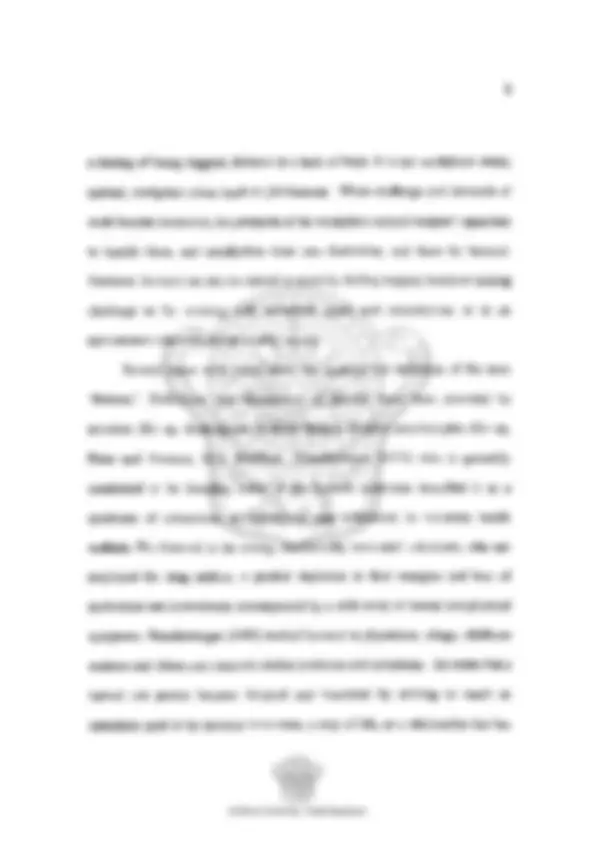
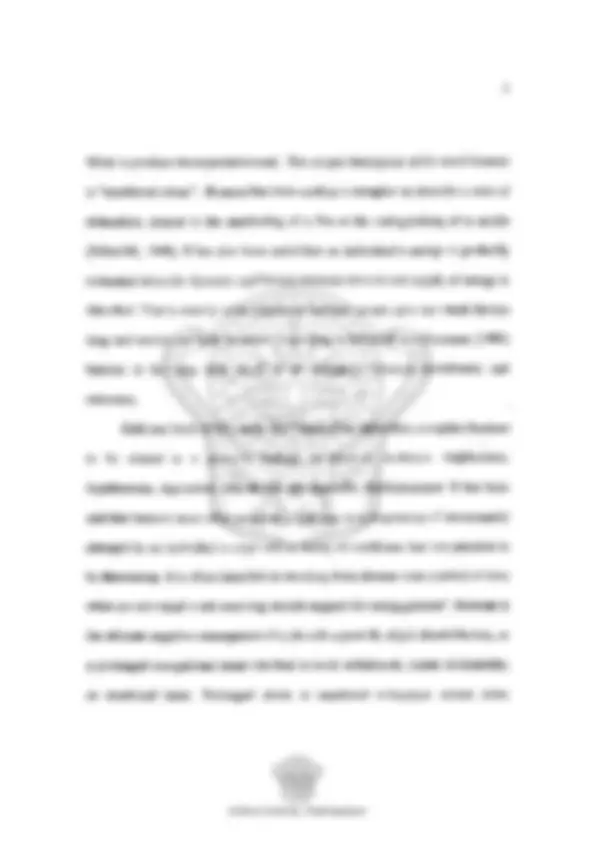
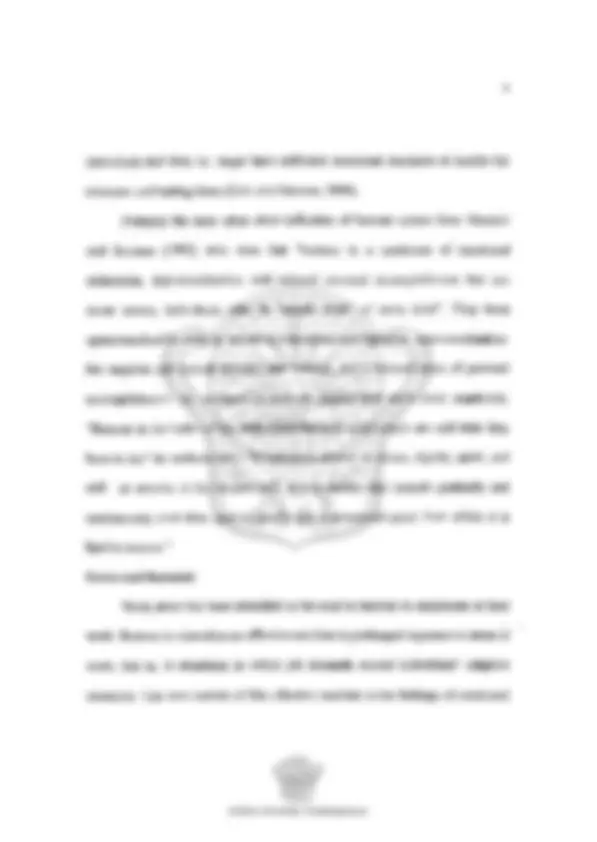
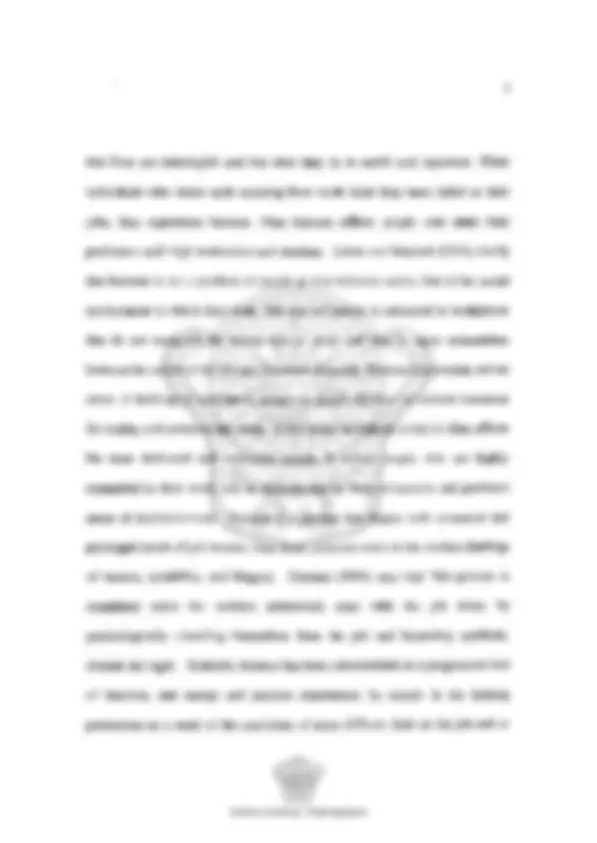
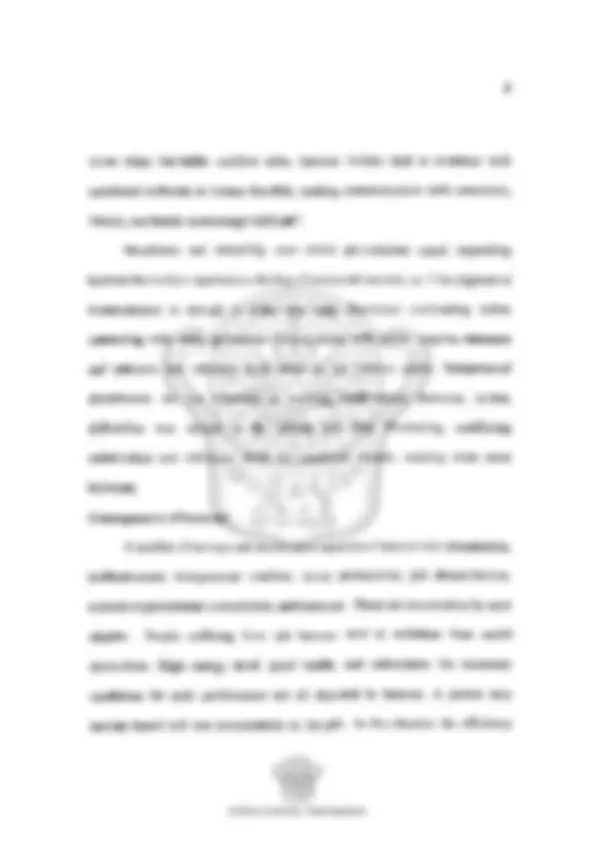
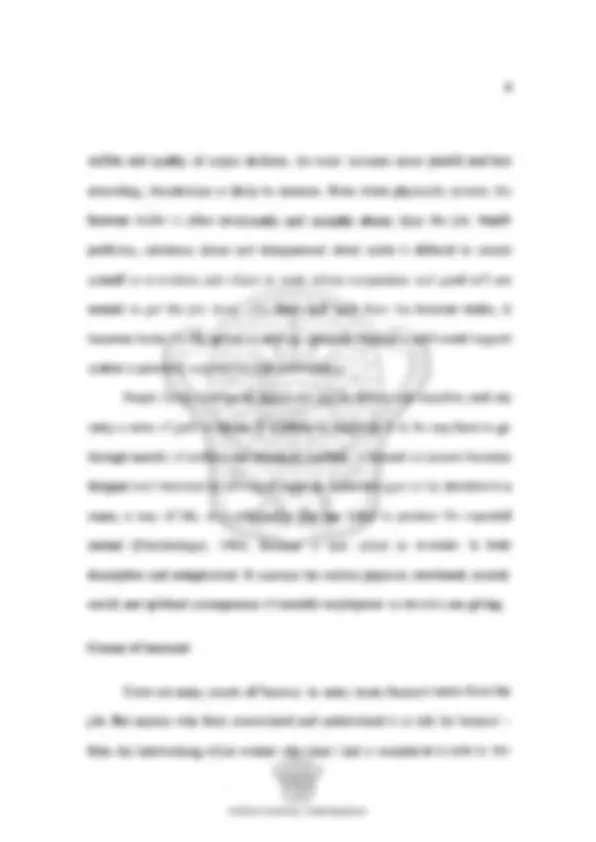
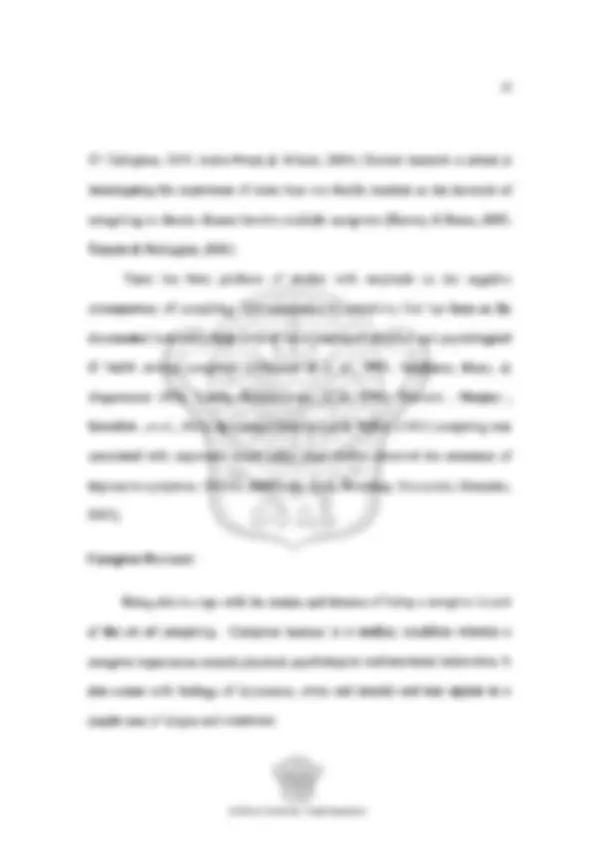
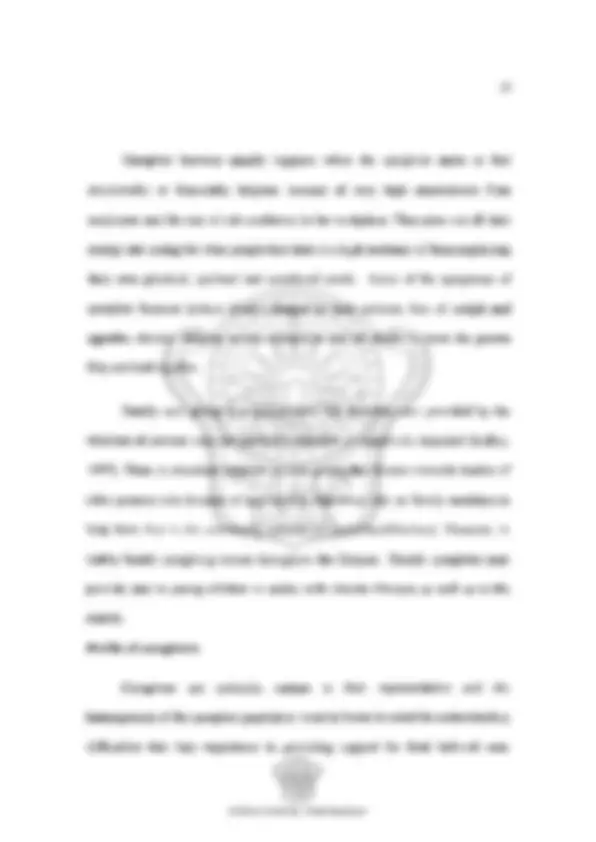
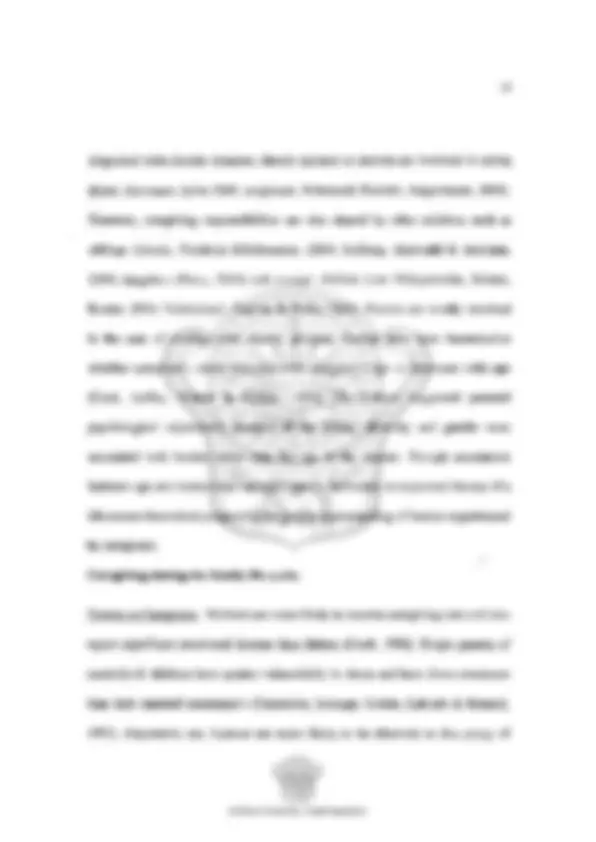
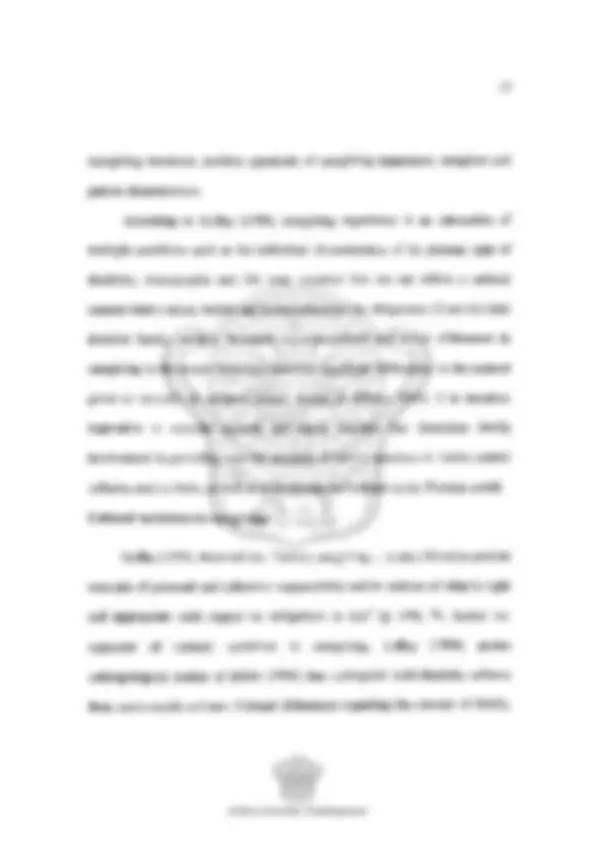
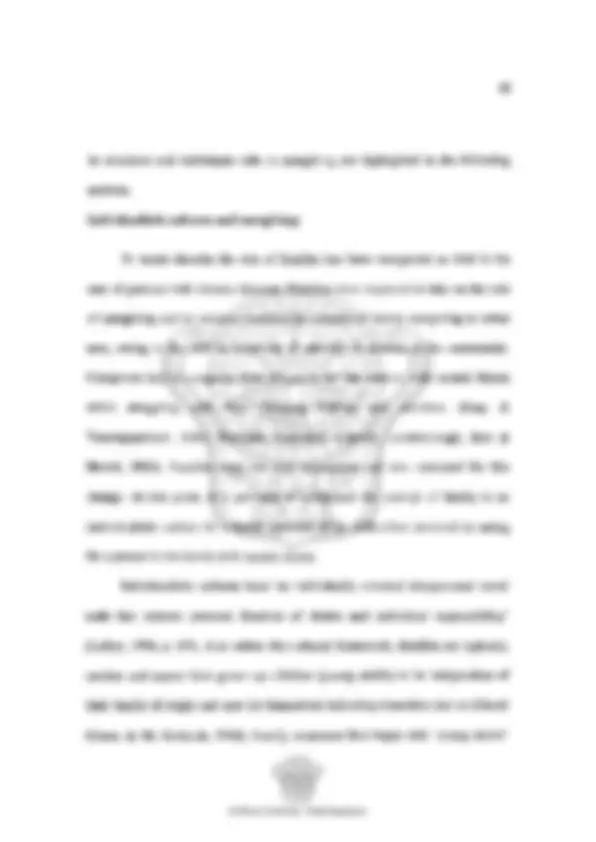
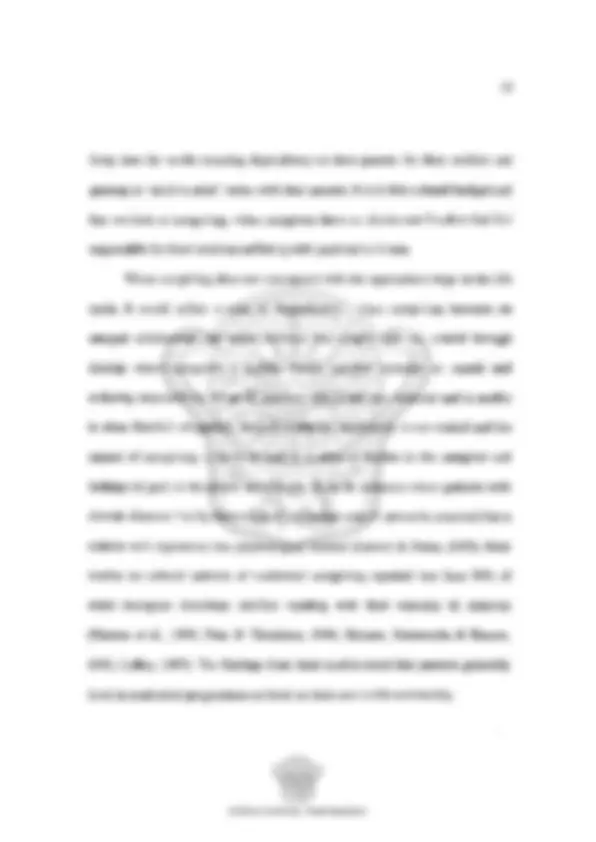
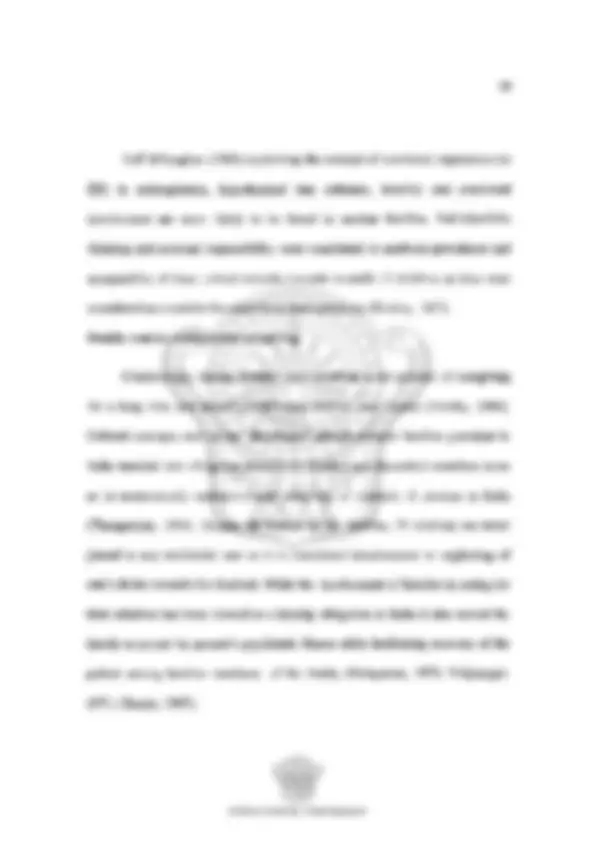



Study with the several resources on Docsity

Earn points by helping other students or get them with a premium plan


Prepare for your exams
Study with the several resources on Docsity

Earn points to download
Earn points by helping other students or get them with a premium plan
Community
Ask the community for help and clear up your study doubts
Discover the best universities in your country according to Docsity users
Free resources
Download our free guides on studying techniques, anxiety management strategies, and thesis advice from Docsity tutors
Some parts of the research in sociology on various problems are given. It will be useful for those doing related reserach.
Typology: Papers
1 / 22

This page cannot be seen from the preview
Don't miss anything!















1 J
Burnout is a state of emotional, mental, and physical exhaustion caused by excessive and prolonged stress. It occurs when a person feels overwhelmed and unable to meet constant demands. As the stress continues, the persons begin to lose the interest or motivation that led them to take on a certain role in the first place. Burnout reduces productivity and saps energy, leaving one feeling increasingly helpless, hopeless, cynical, and resentful. Eventually, one may feel like there is nothing more to give. The negative effects of burnout spill over into every area of life - including your home and social life. Burnout can also cause long-term changes to one's body and make it vulnerable to illnesses like colds and flu. Because of its many consequences, it's important to deal with burnout right away.
The concept of burnout has attracted an increasing amount of attention in mid 70s due mainly to the work of Freudenberger (1974), who coined the term, and to Maslach (1974) who developed Maslach Burnout Inventory. Burnout is a psychological phenomenon that hurts workers and their work. Burnout is increasingly being recognized as a serious problem affecting many people, particularly those in the human service industry. It has been described as a sense of helplessness and hopelessness, low energy levels, chronic tiredness, fatigue, and
failed to produce the expected reward. The simple description of the word burnout is "unrelieved stress". Burnout has been used as a metaphor to describe a state of exhaustion, similar to the smothering of a fire or the extinguishing of a candle (Schaufeli, 1999). It has also been noted that an individual's energy is gradually exhausted when the dynamic equilibrium between demand and supply of energy is disturbed. That is exactly what happens in burnout: people give too much for too long and receive too little in return. According to Schaufeli and Enzmann (1998) burnout is the long term result of an imbalance between investments and outcomes.
Gold and Roth (1993) opine that "most of the authorities recognize burnout t
to be related to a person's feelings of physical depletion, helplessness, hopelessness, depression, detachment and especially disillusionment. It has been said that burnout most often occurs as a final step in a progression of unsuccessful attempts by an individual to cope with a variety of conditions that one perceive to be threatening. It is often identified as resulting from distress over a period of time when an individual is not receiving outside support for caring persons". Burnout is the ultimate negative consequence of a job with a poor fit, of job dissatisfaction, or a prolonged occupational stress can lead to work withdrawal, claims of disability, or emotional harm. Prolonged strain or emotional exhaustion occurs when
individuals feel they no longer have sufficient emotional resources to handle the stressors confronting them (Gold and Shuman, 2009). Probably the most often cited definition of burnout comes from Maslach and Jackson (1982) who state that "burnout is a syndrome of emotional exhaustion, depersonalization, and reduced personal accomplishment that can occur among individuals who do 'people work' of some kind". They have operationalised burnout as including exhaustion and depletion, depersonalization- the negative and cynical attitudes and feelings, and a reduced sense of personal accomplishment- the tendency to evaluate oneself and one's work negatively. "Burnout is the index of the dislocation between what people are and what they have to do," the authors write. "It represents erosion in values, dignity, spirit, and will—an erosion of the human soul. It is a malady that spreads gradually and continuously over time, putting people into a downward spiral from which it is hard to recover." Stress and Burnout: Work stress has been identified as the road to burnout in employees at their work. Burnout is viewed as an affective reaction to prolonged exposure to stress at work, that is, to situations in which job demands exceed individuals' adaptive resources. The core content of this affective reaction is the feelings of emotional
temporary adaptation process that is accompanied by mental and physical symptoms. In contrast, burnout can be considered as a final stage in breakdown in adaptation that results from the long term imbalance of demands and resources, thus from prolonged job stress. A related conceptual distinction between burnout and stress is that the former includes the development of negative attitudes and behaviors towards recipients, the job and the organization, whereas job stress is not necessarily accompanied by such attitudes and behaviors. Development of burnout:
Burnout is persistent, negative, work related of mind in "normal" individuals that is primarily characterized by exhaustion, which is accompanied by distress, a sense of reduced effectiveness, decreased motivation, and development of dysfunctional attitudes and behavior at work. This psychological condition develops gradually but may remain unnoticed for a long time by the individual involved. It results from misfit between intentions and reality in the job. Often burnout is self-perpetuated because of inadequate coping strategies those are associated with the syndrome. Traditionally, the major cause of bumout has been the emotionally demanding interpersonal relationships of professional care givers with their recipients (Schaufeli, Maslach, Marek, 1993). Irwin and Rippe (2008) have observed that work takes on a central role in providing some people with the sense
that lives are meaningful and that what they do is useful and important. When individuals who desire such meaning from work think they have failed in their jobs, they experience burnout. Thus burnout afflicts people who enter their profession with high motivation and idealism. Leiter and Maslach (2005) clarify that burnout is not a problem of people as it is believed earlier, but of the social environment in which they work. The risk of bumout is enhanced in workplaces that do not recognize the human side of work and lead to major mismatches between the nature of the job and the nature of people. Burnout is a process, not an event. A build-up of cumulative symptoms slowly depletes our natural resources for coping with pressure and strain. A key factor in burnout is that it often affects the most dedicated and motivated people. It strikes people who are highly committed to their work, and is characterized by deep exhaustion and profound sense of disillusionment. Burnout is a process that begins with excessive and prolonged levels of job tension. This stress produces strain in the worker (feelings of tension, irritability, and fatigue). Cherniss (1995) says that "the process is completed when the workers defensively cope with the job stress by psychologically detaching themselves from the job and becoming apathetic, cynical and rigid. Similarly, burnout has been characterized as a progressive loss of idealism, and energy and purpose experienced by people in the helping professions as a result of the conditions of more difficult, both on the job and at
suffers and quality of output declines. As work becomes more painful and less rewarding, absenteeism is likely to increase. Even when physically present, the burnout victim is often emotionally and mentally absent from the job. Health problems, substance abuse and interpersonal strain make it difficult to extend oneself to coworkers and others at work whose cooperation and good will are needed to get the job done. As others pull back from the burnout victim, it becomes harder for the person to perform optimally because a solid social support system is generally required for high performance. People facing burnout or depression can be critical and negative, and can carry a sense of guilt or shame. If a person is caught up in it, he may have to go through months of professional treatment and help. A burned out person becomes fatigued and frustrated by striving to reach an unrealistic goal or by devotion to a cause, a way of life, or a relationship that has failed to produce the expected reward (Freudenbeger, 1980). Burnout is also called as monster- is both descriptive and metaphorical. It conveys the serious physical, emotional, mental, social, and spiritual consequences of stressful employment or chronic care giving.
Causes of burnout:
There are many causes of burnout. In many cases, burnout stems from the job. But anyone who feels overworked and undervalued is at risk for burnout - from the hardworking office worker who hasn't had a vacation or a raise in two
years to the frazzled stay-at-home mom struggling with the heavy responsibility of taking care of three kids, the housework, and her aging father. But burnout is not caused solely by stressful work or too many responsibilities. Other factors contribute to burnout, including lifestyle and certain personality traits.
Lifestyle causes of burnout:
Caregivers and caregiver burnout:
Outside the world of paid work, the people most prone to burnout are caregivers - people who devote themselves to the unpaid care of chronically ill or disabled family members. The demands of caregiving can be overwhelming, especially if the caregiver feels they have little control over the situation or that the situation is over their head. Providing care for a family member in need is a centuries-old act of kindness, love, and loyalty. And as life expectancies increase and medical treatments advance, more and more of us will participate in the caregiving process, either as the caregiver, the recipient of care, or possibly both.
O' Callaghan, 2007; Kohn-Wood & Wilson, 2005). Current research is aimed at investigating the experience of more than one family member as the demands of caregiving in chronic disease involve multiple caregivers {Harvey & Burns, 2003; Kuipers & Babington, 2005). There has been plethora of studies with emphasis on the negative consequences of caregiving. The experience of caregiving that has been so far documented indicates a high level of stress leading to physical and psychological ill health among caregivers (Wittmund B el ai, 2002; Jungbauer, Mory, & Angermeyer 2002; Tarrier, Barrowclough, et ah, 2002; Treasure , Murphy , Szmukler , et al., 2001). In a recent study by Lu & Wykle, (2007) caregiving was associated with depressed mood while other studies observed the existence of depressive symptoms (Perlick, Miklowitz, Link, Struening, Kaczynski, Gonzalez, 2007).
Caregiver Burnout:
Being able to cope with the strains and stresses of being a caregiver is part of the art of caregiving. Caregiver burnout is a medical condition wherein a caregiver experiences mental, physical, psychological and emotional exhaustion. It also comes with feelings of depression, stress and anxiety and may appear as a simple case of fatigue and weariness.
Caregiver burnout usually happens when the caregiver starts to feel emotionally or financially helpless because of very high expectations from employers and the rise of role confusion in the workplace. They pour out all their energy into caring for other people that there is a high tendency of them neglecting their own physical, spiritual and emotional needs. Some of the symptoms of caregiver burnout include drastic changes in sleep patterns, loss of weight and appetite, chronic diseases, severe exhaustion and the desire to harm the person they are looking after.
Family care giving is a general term that describes care provided by the relatives of persons who are physically disabled or cognitively impaired (Lefley, 1997). There is abundant literature on care giving that focuses towards studies of older persons who because of age- related disabilities rely on family members to help them live in the community (studies on dementia/alzheimer). However, in reality family caregiving occurs throughout the lifespan. Family caregivers may provide care to young children or adults with chronic illnesses as well as to the elderly. Profile of caregivers: Caregivers are certainly, unique in their representation and the heterogeneity of the caregiver population must be borne in mind for understanding difficulties that they experience in providing support for their beloved ones
parents (Daveson, 1991; Backlar, 1994). Displacement of rage and aggression of the child with chronic disease are more likely to worsen the condition of a single parent (Lachicotte & Benoit, 1994). Spouses as Caregivers: Spouses often experience loss of companionship and intimacy that has been documented in several studies. Judge (1994) remarks when erosion in a relationship sets in due chronic disease of a spouse, the well spouse has no one to confide and share feelings and thoughts, more so with the ill spouse for fear of exacerbating their anxiety and stress. In such a scenario, the well spouse goes through conflicting emotions trying not to infantilize the ill spouse while measuring up for their losses. The responsibility of children is unequally placed on the well spouse. Noh & Avison (1988) observed instances in households where the concerns of ill spouse take precedence over children. Spouses often get depleted of their energies in struggling with the multiple demands of rearing children, maintaining stability of the home and supporting the ill spouse. Siblings as caregivers: Few studies documented the reactions of siblings in a family with a chronic disease. Siblings have reported experiencing feelings of loss, fear of inheriting the problem after the parent's death (Moorman, 1992), resentment, guilt and anger because of the parent's focus on the ill sibling (Saylor, 1994). Some studies also indicate the positive effects of siblings becoming over achievers so as to make up for their ill sibling and solace to parents. This dynamic
was explored by Marsh, Dickens, Koeske, Yackovich, Wilson, Leichliter & Mc Quillis (1994) as 'replacement child syndrome.' Siblings also reported adverse consequences for them and their families because of the stigma of chronic disease (Thara & Srinivasan, 2003). Children as caregivers: Ineffective parenting and chaotic households of mentally ill patients cause major disruptions in their children's lives. Beardslee (1990) noted suicidal thoughts, guilt, social withdrawal and poor school performance among children in families with affective disorders. This was in accord with the findings from another study by Drake, Racusin & Murphy (1990). The negative affect and depressive behaviours of mothers could contribute to a chronically stressful environment for their children (Graczyk, O'Hare, & Neuman, 2000; Hammen, Brennan, & Shih, 2004; Champion, Jaser, Reeslund, Simmons, Potts, Shears & Compass, 2009). While most studies have documented the distress of caregivers, there are a few studies that view the experience of caregiving as positive (Haley, Gitlin, Wisniewski, Mahoney, Coon, Winter, Corcoran, Schinfeld & Ory, 2004; Raschick & Ingersoll & Dayton, 2004; Veltman, 2002; Schwartz & Gordon, 2002 Cohen, Colantonio , Vernich , 2002). The existence of such difference in outcome of caregiving experience can be attributed to a whole range of conditions such as
its structure and individuals role in caregiving are highlighted in the following sections. Individualistic cultures and caregiving: In recent decades the role of families has been recognized as vital in the care of persons with chronic diseases, Families were expected to take on the role of caregiving and in western countries the concept of family caregiving is rather new, owing to the shift in treatment of mentally ill persons in the community. Caregivers had to complete their obligation for the relative with mental illness while struggling with their changing feelings and emotions (Karp & Tanarugsachock, 2000; Wynaden, Ladzinski, Lapsley, Landsborough, Butt & Hewitt, 2006). Families were not only unprepared and also untrained for this change. At this point, it is pertinent to understand the concept of family in an individualistic culture for a better appraisal of the difficulties involved in caring for a person in the family with mental illness.
Individualistic cultures have 'an individually oriented interpersonal moral code that stresses personal freedom of choice and individual responsibility' (Lefley, 1996, p 149). Also within this cultural framework, families are typically nuclear and expect their grown up children (young adults) to be independent of their family of origin and care for themselves indicating transition into adulthood (Carter & Mc Goldrick, 1988). Family structures thus begin with 'young adults'
foray into the world reducing dependency on their parents for their welfare and gaining an 'adult to adult' status with their parents. It is in this cultural background that we look at caregiving, when caregivers have no choice and freedom but feel responsible for their relatives suffering with psychiatric illness. When caregiving does not correspond with the appropriate stage in the life cycle, it would reflect a state of 'dependency'. Thus caregiving becomes an unequal relationship that exists between two people who are related through kinship where caregiver, a healthy family member assumes an unpaid and enduring responsibility for an ill member, who is the care recipient and in unable to share familial obligations. In such a relation, reciprocity is not mutual and the impact of caregiving is likely to lead to a sense of burden in the caregiver and feelings of guilt to the person receiving it. Even in instances where patients with chronic diseases live by themselves in residential units it cannot be assumed that a relative will experience less psychological distress (Harvey & Burns, 2003). Most studies on cultural patterns of residential caregiving reported less than 50% of white European American families residing with their mentally ill relatives (Sharma et al., 1998; Dani & Thienhaus, 1996; Skinner, Steinwachs & Kasper, 1992; Lefley, 1987). The findings from these studies noted that patients generally lived in residential programmes or lived on their own in the community.